#AI predictive analytics for sales
Explore tagged Tumblr posts
Text
Automate Your Sales Pipeline & Watch Revenue Grow: AI’s Secret to Closing More Deals
Automate Your Sales Pipeline & Watch Revenue Grow AI’s Secret to Closing More Deals Let’s be honest—following up with leads can feel like herding cats. You send emails, leave voicemails, drop a friendly “just checking in” message on LinkedIn… and then? Crickets. Meanwhile, potential sales are slipping through the cracks because, let’s face it, manual follow-ups are time-consuming and…
#AI appointment scheduling#AI chatbot lead qualification#AI chatbots for sales#AI conversion optimization#AI email automation#AI for B2B sales#AI for closing deals#AI for customer retention#AI for direct sales#AI for inbound sales#AI for sales follow-ups#AI for sales teams#AI for small business sales#AI in digital sales transformation#AI in sales conversion#AI lead nurturing#AI lead scoring#AI predictive analytics for sales#AI sales assistant#AI sales automation#AI sales efficiency#AI sales engagement#AI sales forecasting#AI sales funnel automation#AI sales intelligence#AI sales optimization#AI sales outreach automation#AI sales pipeline management#AI-based sales strategy#AI-driven contact segmentation
0 notes
Text
AI for Lead Generation: Transforming Outreach with Intelligent Automation
In today’s fast-paced digital landscape, traditional lead generation methods often fall short in delivering timely and personalized outreach. Enter AI for Lead Generation — a transformative approach that leverages artificial intelligence to identify, engage, and convert potential customers more efficiently.
What is AI for Lead Generation?

Benefits of Implementing AI in Lead Generation
1. Enhanced Efficiency
AI automates repetitive tasks such as data entry, lead scoring, and follow-up emails, freeing up sales teams to focus on building relationships and closing deals. This automation accelerates the lead generation process and reduces the likelihood of human error.
2. Improved Lead Quality
By analyzing behavioral data and engagement metrics, AI can prioritize leads that are more likely to convert. This ensures that sales teams spend their time on high-quality prospects, increasing the chances of successful conversions.
3. Personalized Outreach
AI enables the creation of personalized content and messaging tailored to individual prospect’s interests and behaviors. This level of personalization enhances engagement and fosters stronger connections with potential customers.
4. Scalability
AI systems can handle large volumes of data and interactions simultaneously, allowing businesses to scale their lead generation efforts without a proportional increase in resources.
How to Implement AI for Lead Generation
1. Integrate AI-Powered Tools
Adopt AI-driven platforms that specialize in lead generation, such as chatbots for initial engagement or CRM systems with predictive analytics capabilities. These tools can automate the identification and nurturing of leads.
2. Leverage Predictive Analytics
Use AI to analyze historical data and predict future customer behaviors. This insight allows for more targeted marketing strategies and efficient allocation of resources.
3. Automate Communication
Implement AI to automate email campaigns and social media interactions, ensuring timely and consistent communication with prospects. Automation helps maintain engagement throughout the buyer’s journey.
4. Monitor and Optimize
Continuously track the performance of AI-driven lead generation efforts. Use analytics to assess effectiveness and make data-informed adjustments to strategies as needed.
Real-World Impact
Companies that have embraced AI for Lead Generation report significant improvements in conversion rates and customer engagement. By automating routine tasks and providing deeper insights into customer behavior, AI empowers businesses to make more informed decisions and achieve better outcomes.
Conclusion
Incorporating AI for Lead Generation into your marketing strategy can revolutionize the way you attract and convert customers. By enhancing efficiency, improving lead quality, and enabling personalized outreach, AI serves as a powerful ally in achieving your business growth objectives. Embrace the future of lead generation and unlock new opportunities with intelligent automation.
#AI for lead generation#predictive analytics#sales automation#lead scoring#marketing AI tools#intelligent outreach#B2B lead generation#AI-powered marketing
0 notes
Text
#power bi#Improve Sales Using AI#AI-Enabled Analytics#Data in Automotive Sector#Predictive Sales Analytics#AI-Driven Lead Scoring#Sales Services with AI#AI-Powered Automotive Sales
0 notes
Text
AI-Powered Sales & Marketing: Market Dynamics, Emerging Trends, and 2024 Growth Projections
Exploring the Global AI for Sales & Marketing Market
The Global AI for Sales & Marketing Market is rapidly transforming the way businesses engage with customers, optimize marketing strategies, and streamline their operations. With AI solutions becoming integral in enhancing data-driven decision-making, businesses are leveraging these tools to automate processes, improve efficiency, and personalize customer interactions. This growing demand for AI is expected to drive significant market growth, shaping the future of sales and marketing for companies across industries.
Market Overview
The Global AI for Sales & Marketing Market is projected to reach USD 55.2 billion by 2025, expanding at a compound annual growth rate (CAGR) of 34.1%. By 2034, the market could soar to USD 771.2 billion. The widespread adoption of AI-driven solutions is helping businesses enhance customer acquisition, improve lead generation, and better understand consumer behavior, leading to more efficient sales strategies. As companies embrace AI to optimize customer experiences and improve marketing performance, the potential for growth in this sector is immense.
Discover more in the full report here: AI for Sales & Marketing Market Report
Key AI Applications in Sales & Marketing
AI’s impact on sales and marketing is diverse, with several applications enhancing various facets of the customer journey:
Personalized Marketing: By analyzing consumer data, AI helps businesses tailor marketing efforts to individual preferences, offering personalized recommendations and content.
Lead Generation and Scoring: AI tools assess customer data to identify high-quality leads, allowing sales teams to focus their efforts on the most promising prospects.
Chatbots and Virtual Assistants: AI-powered chatbots offer 24/7 customer support, answering queries instantly and improving customer engagement.
Predictive Analytics: AI algorithms analyze historical data to predict future trends, customer behaviors, and sales outcomes, enabling businesses to make informed decisions.
Campaign Automation: AI automates digital marketing campaigns, optimizing targeting and ad spend for maximum return on investment (ROI).
Regional Insights: North America Takes the Lead
North America is set to dominate the AI for Sales & Marketing Market, holding a projected 39.5% market share by 2025. The region’s advanced technology infrastructure, combined with the rapid adoption of AI by businesses, gives it a strong competitive edge. Industries such as retail, e-commerce, healthcare, and finance are driving AI adoption, using these solutions to enhance customer experiences and streamline operations.
Other regions also show promising growth:
Europe: European businesses are increasingly adopting AI tools to improve operational efficiency and customer engagement, driving steady market growth.
Asia-Pacific (APAC): Countries like China, Japan, and India are embracing AI technologies due to their expanding digital ecosystems and large consumer base.
Middle East & Africa (MEA): AI adoption is gaining traction in countries like the UAE and Saudi Arabia, where businesses are turning to AI solutions to enhance sales productivity and customer interactions.
For more tailored insights, get in touch: Request Information
Emerging Trends in AI for Sales & Marketing
Several key trends are shaping the future of AI in the sales and marketing space:
AI Integration with CRM Systems: AI is becoming a core component of CRM systems, automating tasks and delivering actionable insights to help businesses develop more effective sales strategies.
AI for Content Creation: Machine learning and natural language processing (NLP) are helping marketers generate high-quality content and optimize it for SEO, reducing the workload for marketing teams.
AI-Powered Data Analytics: By processing vast amounts of customer data, AI helps businesses identify trends and customer preferences, informing smarter marketing decisions.
Voice Search Optimization: As voice-activated devices become more common, AI tools are optimizing content for voice search, helping businesses remain visible and accessible to consumers.
Advanced Customer Segmentation: AI allows for more granular customer segmentation, helping businesses target specific groups with highly personalized marketing messages.
Learn more about the trends in this space here: AI for Sales & Marketing Market Checkout
Benefits of AI in Sales & Marketing
Incorporating AI into sales and marketing processes offers numerous advantages:
Improved Customer Experience: AI allows businesses to personalize customer interactions, providing more relevant content, recommendations, and offers that boost satisfaction and loyalty.
Increased Efficiency: By automating repetitive tasks, AI frees up resources, enabling sales and marketing teams to focus on higher-value activities.
Data-Driven Insights: AI helps businesses extract valuable insights from large volumes of data, guiding decision-making and improving marketing strategies.
Higher ROI: With AI’s ability to optimize ad targeting and campaign management, businesses can achieve better results with lower costs, ultimately improving ROI.
Challenges in AI Adoption
Despite its many benefits, the AI for Sales & Marketing Market faces a few challenges:
Data Privacy Concerns: As AI relies heavily on customer data, companies must navigate concerns related to privacy laws and regulations, which could impact adoption.
High Implementation Costs: AI solutions require significant investment in technology and skilled professionals, which can be a barrier for small and medium-sized enterprises (SMEs).
Lack of Skilled Talent: The shortage of qualified AI professionals is a challenge for businesses looking to integrate AI into their sales and marketing strategies.
Frequently Asked Questions
What is the role of AI in sales and marketing? AI helps businesses optimize processes such as customer segmentation, predictive analytics, lead generation, and campaign management to enhance efficiency and engagement.
How does AI impact customer service? AI-driven chatbots and virtual assistants provide immediate responses to customer queries, improving response times and overall satisfaction.
Which regions are adopting AI for sales and marketing the fastest? North America leads the way, followed by Europe, APAC, and the Middle East & Africa.
What benefits does AI offer to marketers? AI enables better customer targeting, automates content creation, provides valuable insights, and improves ROI on marketing efforts.
What challenges does AI adoption face in sales and marketing? Challenges include concerns over data privacy, high costs of implementation, and a lack of qualified professionals skilled in AI technologies.
#AI for Sales#AI for Marketing#Sales Automation#Marketing Automation#AI-Driven Analytics#Customer Insights#Predictive Analytics#Lead Generation#Chatbots for Sales#Personalization Tools#CRM Integration
0 notes
Text
How Healthcare Providers Can Use Leadzen.ai for Growth
In today’s rapidly evolving healthcare landscape, providers are increasingly relying on technology to boost growth, improve patient engagement, and streamline operations. Lead generation, patient acquisition, and data-driven decision-making have become essential aspects of healthcare marketing. With the rise of AI-powered solutions, healthcare providers are now equipped with more advanced tools to enhance their lead generation efforts.
Leadzen.ai, an innovative AI-powered lead generation and data intelligence platform, has emerged as a powerful tool for healthcare providers to improve patient acquisition, optimize marketing strategies, and drive growth. By leveraging Leadzen.ai, healthcare organizations can identify high-quality leads, personalize patient outreach, and streamline their sales pipeline, resulting in increased conversions and overall business growth.
This article will explore how healthcare providers can utilize Leadzen.ai to achieve growth, improve patient acquisition, and foster long-term success.
1. Understanding Leadzen.ai
Leadzen.ai is a cutting-edge AI platform designed to help businesses, including healthcare providers, with lead generation, data analysis, and customer acquisition. It harnesses machine learning and artificial intelligence to gather insights about potential patients, identify the right leads, and assist in the overall lead management process.
For healthcare providers, Leadzen.ai goes beyond simply finding leads; it helps to qualify and nurture those leads, ensuring that only the most promising opportunities are pursued. This makes it easier for healthcare organizations to focus on high-value patients while reducing the time and effort spent on unqualified leads.
2. AI-Driven Patient Acquisition
One of the primary ways healthcare providers can leverage Leadzen.ai for growth is by improving patient acquisition strategies. Traditional methods of acquiring new patients often involve cold calling, direct mail, and other resource-intensive efforts that may not be effective in reaching the right people. Leadzen.ai changes the game by providing AI-driven insights that help healthcare organizations target the most relevant and engaged prospects.
How Leadzen.ai Helps in Patient Acquisition:
Targeted Lead Identification: The platform uses advanced AI algorithms to analyze data from various sources, identifying high-value leads—patients who are most likely to need the services you provide.
Segmentation and Personalization: Leadzen.ai enables healthcare providers to segment potential patients based on factors such as location, demographics, health conditions, and even behavioral data. This segmentation helps in creating personalized marketing campaigns that resonate with specific patient needs.
Predictive Analytics: Leadzen.ai employs predictive analytics to forecast the likelihood of a lead converting into a patient, allowing healthcare providers to focus their efforts on leads with the highest potential.
By using these AI-driven features, healthcare providers can increase the efficiency of their marketing and outreach efforts, leading to a more efficient patient acquisition process and improved conversion rates.
3. Improving Marketing Campaigns with Data Insights
Healthcare providers often rely on marketing campaigns to attract patients, whether through digital ads, email marketing, social media, or other channels. However, without the right data, these campaigns can miss the mark and fail to engage the right audience. Leadzen.ai provides healthcare marketers with the tools they need to create data-driven, targeted campaigns.
Benefits of Data-Driven Marketing with Leadzen.ai:
Comprehensive Data Analysis: Leadzen.ai gathers data from multiple channels, helping healthcare providers understand their audience’s preferences and behaviors. This allows for the creation of campaigns that speak directly to patients' needs and concerns.
Better Lead Scoring: With the platform’s AI algorithms, healthcare providers can assign lead scores based on the likelihood of conversion. This makes it easier to prioritize high-quality leads and focus marketing efforts on the most promising prospects.
Real-Time Insights: Leadzen.ai provides real-time data insights, helping healthcare providers quickly adapt their marketing strategies based on what is working and what isn’t. This agility is crucial in optimizing campaigns and achieving better results.
By harnessing the power of data insights, healthcare providers can ensure that their marketing campaigns are more relevant, timely, and effective, leading to higher patient engagement and improved campaign outcomes.
4. Automating Lead Nurturing and Follow-Ups
Effective lead nurturing is key to converting leads into long-term patients. Leadzen.ai helps automate lead nurturing processes, ensuring that no patient opportunity is missed while providing timely, personalized communication.
How Leadzen.ai Automates Lead Nurturing:
Automated Follow-Ups: Leadzen.ai can automatically send follow-up emails, text messages, or other forms of communication to prospects, ensuring that leads are continuously engaged and informed about the healthcare services offered.
Personalized Messaging: By analyzing lead behavior and preferences, Leadzen.ai enables healthcare providers to send tailored messages that are more likely to resonate with individual leads, increasing the chances of conversion.
Timely Engagement: Leadzen.ai ensures that leads are nurtured at the right time. For example, if a lead has shown interest in a particular service but hasn’t yet converted, the system can send relevant reminders, promotions, or educational content to keep the lead engaged.
Automating lead nurturing saves healthcare providers valuable time, ensures no lead falls through the cracks, and increases the likelihood of converting leads into paying patients.
5. Improving Patient Retention with Leadzen.ai
While acquiring new patients is essential, retaining existing patients is just as important for sustainable growth. Leadzen.ai helps healthcare providers retain patients by providing insights into patient behavior and identifying opportunities for engagement.
How Leadzen.ai Supports Patient Retention:
Engagement Tracking: Leadzen.ai tracks patient interactions and engagement levels, helping healthcare providers identify patients who may be at risk of disengagement. With this data, providers can proactively reach out to patients with targeted messaging to keep them involved.
Tailored Content and Services: Based on patient data and preferences, healthcare providers can use Leadzen.ai to offer personalized content, reminders for check-ups, and promotions for additional services that meet the unique needs of their patients.
Loyalty Programs: Leadzen.ai can assist in identifying patients who may be interested in loyalty programs or ongoing care packages, encouraging long-term relationships and repeat visits.
By improving patient retention, healthcare providers can generate a steady stream of revenue and enhance the lifetime value of each patient.
6. Optimizing the Sales Pipeline
Managing a healthcare sales pipeline can be complex, especially when it involves multiple departments and patient touchpoints. Leadzen.ai helps streamline this process by automating many aspects of lead management.
How Leadzen.ai Optimizes the Sales Pipeline:
Lead Prioritization: Leadzen.ai’s AI algorithms rank leads based on their likelihood to convert, enabling healthcare providers to focus resources on the highest-value leads.
Pipeline Visibility: With a clear overview of where each lead stands in the sales pipeline, healthcare providers can make better decisions about which leads need attention and which ones are ready to convert.
Streamlined Workflow: By automating follow-ups, reminders, and engagement efforts, Leadzen.ai ensures that leads are continuously moved through the pipeline, reducing delays and ensuring timely conversion.
An optimized sales pipeline leads to faster lead conversion, improved resource allocation, and increased overall growth.
Conclusion
In a crowded and competitive healthcare market, providers must adopt innovative tools to improve patient acquisition, retention, and overall growth. Leadzen.ai offers a powerful, AI-driven solution for healthcare providers, helping them identify high-quality leads, automate nurturing efforts, and optimize marketing campaigns. With data-driven insights and automation, Leadzen.ai enables healthcare organizations to boost patient engagement, improve conversion rates, and foster long-term patient relationships, ultimately driving business growth.
By incorporating Leadzen.ai into their growth strategies, healthcare providers can create a more efficient, personalized, and effective approach to lead generation and patient care.
#Leadzen.ai#AI-powered lead generation#healthcare lead generation#patient acquisition#data-driven marketing#lead nurturing#healthcare growth#automated follow-ups#patient retention#sales pipeline optimization#predictive analytics#healthcare marketing
0 notes
Text
The role of artificial intelligence and machine learning in predictive analytics
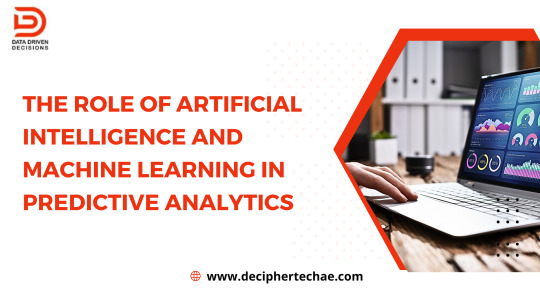
Predictive analytics revolutionizes industries by providing data-driven insights that help businesses anticipate future trends, behaviors, and outcomes. At the heart of predictive analytics are two powerful technologies: artificial intelligence (AI) and machine learning (ML). This blog delves into the roles of AI and ML in predictive analytics, their distinctions, use cases, and the business benefits they bring.
What is Artificial Intelligence?
Artificial Intelligence (AI) is a broad field of computer science focused on creating systems capable of performing tasks that typically require human intelligence. These tasks include learning, reasoning, problem-solving, understanding natural language, and perceiving the environment. AI systems can be classified into narrow AI, designed for specific tasks, and general AI, which can perform any intellectual task a human can.
What is Machine Learning?
Machine Learning (ML) is a subset of AI that involves the development of algorithms that allow computers to learn from and make decisions based on data. Instead of being explicitly programmed to perform a task, ML systems use statistical techniques to improve performance as more data becomes available. There are several types of ML, including supervised learning, unsupervised learning, semi-supervised learning, and reinforcement learning, each serving different purposes based on the nature of the data and the desired outcome.
What is Predictive Analytics?
Predictive analytics uses historical data, statistical algorithms, and machine learning techniques to identify the likelihood of future outcomes based on historical data. It involves analyzing past and current data to predict future trends, events, and behaviours. Predictive analytics is widely used in various industries, including finance, healthcare, marketing, and manufacturing, to make informed decisions and gain a competitive edge.
AI versus ML versus Predictive Analytics
While AI, ML, and predictive analytics are interrelated, they are not synonymous:
AI is the overarching concept of machines mimicking human intelligence.
ML is a subset of AI focused on algorithms that learn from data.
Predictive analytics is a process that uses statistical methods and ML to make predictions about future events.
Predictive analytics often employs machine learning techniques, a critical artificial intelligence component.
Use Cases of AI, ML, and Predictive Analytics
AI Use Cases
Healthcare: AI-driven systems can diagnose diseases, suggest treatments, and predict patient outcomes. For example, IBM Watson Health uses AI to analyze large volumes of medical data to assist in diagnosis and treatment planning.
Finance: AI algorithms are used for fraud detection, algorithmic trading, and risk management. AI can analyze vast amounts of transaction data in real time to identify unusual patterns indicative of fraud.
Customer Service: AI-powered chatbots and virtual assistants, like Amazon's Alexa and Apple's Siri, provide customer support and enhance user experience by understanding and responding to natural language queries.
Autonomous Vehicles: AI enables self-driving cars to perceive their environment, make decisions, and navigate without human intervention. Companies like Tesla and Waymo are at the forefront of this technology.
ML Use Cases
Recommendation Systems: Platforms like Netflix and Amazon use ML algorithms to analyze user behaviour and preferences to recommend movies, shows, and products.
Spam Detection: Email providers use ML to identify and filter out spam messages. Google's Gmail, for example, uses ML models to improve spam detection accuracy.
Predictive Maintenance: In manufacturing ML models predict equipment failures before they occur, allowing for timely maintenance and reducing downtime. GE uses ML in its Predix platform to enhance industrial equipment maintenance.
Image and Speech Recognition: ML algorithms power facial recognition systems, image classification, and voice-activated assistants. Applications include security systems and personal assistant devices.
Predictive Analytics Use Cases
Retail: Predictive analytics helps retailers forecast demand, optimize inventory, and personalize marketing campaigns. For instance, Walmart uses predictive analytics to manage its supply chain efficiently.
Healthcare: Predictive models identify at-risk patients, predict disease outbreaks, and optimize resource allocation. Healthcare use predictive analytics to manage patient flow and improve care delivery.
Finance: Financial institutions use predictive analytics for credit scoring, risk assessment, and portfolio management. Companies like decipher use predictive models to assess credit risk.
Marketing: Businesses leverage predictive analytics to segment customers, predict lifetime value, and tailor marketing efforts. Predictive analytics helps companies like Amazon target customers with relevant product recommendations.
Business Benefits of AI, ML, and Predictive Analytics
Enhanced Decision-Making: By providing data-driven insights, these technologies enable businesses to make informed decisions, reducing uncertainty and improving strategic planning.
Increased Efficiency: Automating routine tasks through AI and ML reduces manual effort, allowing employees to focus on higher-value activities. This leads to cost savings and improved operational efficiency.
Improved Customer Experience: Personalization and targeted marketing enhance customer satisfaction and loyalty. Predictive analytics helps businesses understand customer behaviour and preferences, leading to more effective engagement strategies.
Competitive Advantage: Organizations that adopt AI, ML, and predictive analytics can anticipate market trends and adapt quickly, gaining an edge over competitors.
Risk Mitigation: Predictive models identify potential risks and enable proactive measures. For example, predictive analytics helps detect fraudulent transactions and manage credit risk in finance.
Innovation: These technologies open up new possibilities for innovation, allowing businesses to develop new products and services that meet evolving customer needs.
Conclusion
Artificial intelligence and machine learning are pivotal in predictive analytics, transforming data into actionable insights that drive business success. By understanding the nuances and applications of these technologies, organizations can harness their potential to predict future trends, optimize operations, and enhance decision-making. As AI and ML evolve, their integration into predictive analytics will undoubtedly lead to even more sophisticated and accurate predictions, further solidifying their importance in business.
FAQ
What are the key differences between artificial intelligence, machine learning, and predictive analytics?
Artificial intelligence (AI) is a broad field aimed at creating systems capable of performing tasks that typically require human intelligence, such as learning, reasoning, and problem-solving. Machine learning (ML) is a subset of AI focused on developing algorithms that enable computers to learn from data and improve their performance over time. Predictive analytics is a process that uses statistical techniques and ML to analyze historical data and predict future outcomes. Predictive analytics often employs ML techniques, and ML is a component of AI.
How do businesses benefit from using AI and ML in predictive analytics?
Businesses benefit from using AI and ML in predictive analytics in several ways, including enhanced decision-making through data-driven insights, increased operational efficiency by automating routine tasks, improved customer experience through personalized marketing, gaining a competitive advantage by anticipating market trends, mitigating risks by identifying potential issues early, and fostering innovation by developing new products and services that meet evolving customer needs.
Can you provide examples of predictive analytics use cases in different industries?
Yes, predictive analytics is used across various industries. In retail, it helps forecast demand and optimize inventory. In healthcare, predictive models identify at-risk patients and optimize resource allocation. Financial institutions use predictive analytics for credit scoring and risk assessment. In marketing, businesses leverage it to segment customers and predict lifetime value. For example, Walmart uses predictive analytics to manage its supply chain, while hospitals use it to improve patient flow and care delivery.
What are some typical applications of machine learning in everyday life?
Machine learning is widely applied in everyday life. Some typical applications include recommendation systems used by Netflix and Amazon to suggest movies and products, spam detection in email services like Gmail, predictive maintenance in manufacturing to foresee equipment failures, image and speech recognition in security systems, and voice-activated assistants like Apple's Siri and Amazon's Alexa. These applications enhance user experience, improve efficiency, and provide personalized services.
How does predictive analytics help in risk mitigation for businesses?
Predictive analytics helps businesses mitigate risks using data-driven models to identify potential hazards and enable proactive measures. For example, in finance, predictive models can detect fraudulent transactions by analyzing patterns and anomalies in transaction data. In healthcare, predictive analytics can foresee patient readmission risks and prompt preemptive interventions. By anticipating risks, businesses can take preventive actions, thus reducing the likelihood of adverse outcomes and minimizing financial losses.
#data science and analytics company#fmcg companies in dubai#data science solutions for fmcg in dubai#fmcg sector in dubai#data science solutions for fmcg#maximizer crm provider in dubai#data-driven sales and marketing solutions in dubai#maximizer crm in dubai#retail company dubai#retail expansion in dubai#AI and ML in predictive analytics
0 notes
Text
Struggling with Sales Efficiency? AI can help. Optimize your sales process, personalize outreach, and predict customer needs. Learn how AI for sales can transform your team.
#ai for sales#ai lead generation#sales automation ai#artificial intelligence in sales and marketing#ai sales funnel#ai leads#ai sales systems#sales automation#sales automation system#AI-driven Sales#smart sales solutions#predictive sales analytics
0 notes
Text
New Post ‹ Site Title — WordPress.com
https://wordpress.com/post/amanandrabiaonline.wordpress.com?url=https%3A%2F%2Fwordpress.com%2Fgo%2Fcontent-blogging%2Fsetting-your-podcast-marketing-strategy-three-key-steps%2F%3Fpage_id%3D18003265&is_post_share=true&v=5 Aman and Rabia Enterprise can leverage various AI tools to enhance productivity and streamline their operations in the Ethiopian cultural clothes industry. One such tool is…

View On WordPress
#AI tools for image recognition and virtual fitting rooms can revolutionize the online shopping experience for customers#AI-powered demand forecasting tools can help Aman and Rabia Enterprise optimize their inventory management#allowing them to make data-driven decisions and tailor their products to meet consumer needs effectively. Additionally#allowing them to visualize how the cultural garments will look on them before making a purchase. By implementing such tools on their e-comme#Aman and Rabia Enterprise can gain valuable insights into customer preferences#Aman and Rabia Enterprise can increase customer engagement#Aman and Rabia Enterprise can leverage various AI tools to enhance productivity and streamline their operations in the Ethiopian cultural cl#Aman and Rabia Enterprise can unlock new opportunities for growth#and deliver a seamless and personalized experience to their customers in the Ethiopian cultural clothes industry.#and drive sales. In conclusion#and external factors#and market trends#and maximize profitability. Furthermore#and minimize excess inventory costs. By analyzing historical sales data#and personalize marketing campaigns. By utilizing AI-powered analytics#and provide personalized recommendations#automating repetitive tasks through AI-based tools such as chatbots or virtual assistants can free up valuable time for the team to focus on#buying patterns#by integrating AI tools strategically into their workflow#enabling the company to optimize production schedules#enhancing the overall shopping experience for customers while improving operational efficiency for Aman and Rabia Enterprise. Moreover#improve operational efficiency#market trends#minimize waste#process orders#reduce return rates#reduce stockouts#these tools can predict future demand accurately#track sales leads#which can help them efficiently manage customer interactions
0 notes
Text
Narayanan/Kapoor's book AI Snake Oil is on sale for half price at Princeton University Press.
They are more bullish on generative AI than I am (a lot more), but their takedown of predictive analytics is excellent, and they explain everything in layperson-friendly terms. Recommended.
It's also a good time to pre-order The AI Con, which is coming out on May 13. The online book launch is this Thursday, 8 May 2025! I've had the privilege of hearing both authors speak in-person, and they're absolutely brilliant, both of them.
#ai#ai fail#ai is fail#ai snake oil#the ai con#arvind narayanan#sayash kapoor#alex hanna#emily bender
3 notes
·
View notes
Text
Google Analytics
Google Analytics (GA) is a free web and app analytics service from google that tracks how users interact with your website or mobile app. It Collects data like visitor numbers, page views,session duration, bounce rate, and user demografics, and user demographics,and presents it in easy to understand reports.By analyzing traffic from Search engines , advertising platforms, and social media , you can evaluate the impact of your marketing efforts.
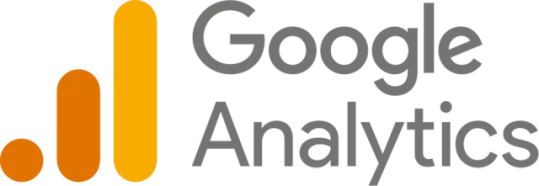
Key Features
Visitor Statistics: Measure overall site traffic and Segment it into new users versus returning users.
Behaviour Tracking: Find out which of your Pages draw the most attention, see how long Visitors Stay on each, and map out their paths through yor Site.
Acquisation Insights: Discover where your User Come from- organic Search, paid ads, referals, or Social media.
Conversion & Goals: Track Specific actions you define as goals.
Real-time Reporting: It display data on active Visitors and their actions during the last 30 minutes , updating live- usually within seconds to a few minutes.
Why It's Useful
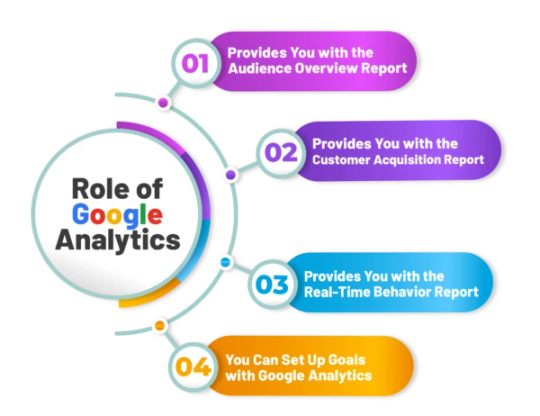
Optimize your Website: Find exact Pages where users are leaving, and refine their content and design to reduce dropout.
Improve marketing ROI: Track which campaigns drive the most Conversions.
Understand your audience: Segment users by demographics,interests and device type.
Make informed decisions: Utilize data to guide content,design,and business Strategy.
Use Cases Across Industries
Whether you run an e-commerce store, a B2B company, a news website, or a nonprofit organization, Google Analytics enables you to:
Monitor sales funnels
Identify high-performing pages and drop-off points
Segment users by behavior or source
A/B test content and features
Refine marketing strategy using real-time and historical data
Conclusion
Google analytics is a powerful and accessible tool for understanding your Website's audience and performance. It uses AI-powered insights, real time reporting , and predictive metrics -like purchase Probability and Churn risk- to help businesses understand User behaviour deeply and act on it quickly. It helps you make smarter decisions-from marketing to Site design-based on real user behaviour and trends.
To know More: Google analytics
2 notes
·
View notes
Text
AI-Powered Business Analytics: Make Smarter Decisions, Faster
AI-Powered Business Analytics Make Smarter Decisions, Faster 💡 AI-powered analytics give you instant insights into what’s working and what’s not. Learn how to use AI to optimize business decisions. The Problem: Are You Guessing or Growing? Let’s be real—making business decisions based on gut feelings is like throwing darts blindfolded. Sure, you might hit the target occasionally, but most of…
#AI automation for business#AI business analytics#AI business optimization tools#AI customer insights#AI data analysis#AI data visualization#AI for advertising performance#AI for audience segmentation#AI for business intelligence#AI for business scalability#AI for customer retention#AI for customer segmentation#AI for demand prediction#AI for eCommerce analytics#AI for financial forecasting#AI for operational decision-making#AI for process optimization#AI for revenue optimization#AI for ROI maximization#AI for sales forecasting#AI for sales optimization#AI for small business growth#AI in corporate decision-making#AI in digital marketing#AI in marketing analytics#AI operational efficiency#AI performance tracking#AI predictive analytics#AI-driven business strategy#AI-driven competitive analysis
0 notes
Text
One24: The All-in-One Platform Transforming Business Operations for IT Companies
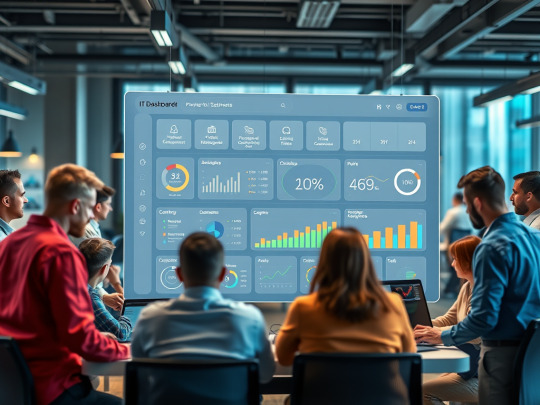
Key Features That Set One24 Apart 🧠 Smart HRMS Handle everything from hiring, onboarding, attendance, and leave to appraisals and payroll. Say goodbye to spreadsheets and hello to automation.
📊 Project & Task Management Keep projects on track with real-time updates, sprint boards, deadline tracking, and team collaboration tools—all visible in a single dashboard.
💻 IT Asset & Hardware Management Track and manage your entire hardware inventory, software licenses, and IT tickets. Prevent asset loss, improve compliance, and control costs.
📈 Sales CRM Manage leads, pipeline stages, and client communication. Get real-time insights into your sales cycle and close deals faster.
📉 AI Analytics & Business Intelligence Leverage powerful, AI-driven analytics that turn raw data into smart decisions. Identify trends, predict risks, and track team performance with ease.
🔄 Automation & Notifications Automate repetitive workflows like approvals, reminders, and compliance checks so your teams can focus on what really matters—innovation and growth.
2 notes
·
View notes
Text
From Data to Decisions: Leveraging Product Analytics and AI Services for Faster B2B Innovation
In today’s competitive B2B landscape, innovation isn’t just about having a great product idea. It’s about bringing that idea to life faster, smarter, and with precision. That means making every decision based on real data, not guesswork. At Product Siddha, we help businesses unlock faster B2B innovation by combining the power of product analytics and AI services into one seamless strategy.
Why B2B Innovation Fails Without Data-Driven Insight
Most B2B companies struggle to innovate at scale because they lack visibility into what users actually do. Product teams launch features based on assumptions. Marketing teams operate without a feedback loop. Sales teams miss opportunities due to fragmented data. This disconnect creates wasted effort and missed growth.
Product analytics is the solution to this problem. When integrated with AI services, you don’t just track user behavior — you predict it. This lets you make smarter decisions that directly improve your product roadmap, customer experience, and business outcomes.
The Power of Product Analytics in B2B Growth
Product analytics turns user behavior into actionable insight. Instead of relying on vanity metrics, Product Siddha helps you understand how real people interact with your product at every stage. We implement tools that give you a complete view of the user journey — from first touchpoint to long-term retention.
With powerful product analytics, you can:
Identify high-impact features based on real usage
Spot friction points and user drop-offs quickly
Personalize product experiences for higher engagement
Improve onboarding, reduce churn, and boost ROI
This is not just reporting. It’s clarity. It’s control. And it’s the foundation of faster B2B innovation.
Accelerate Outcomes with AI Services That Work for You
While product analytics shows you what’s happening, AI services help you act on that data instantly. Product Siddha designs and builds low-code AI-powered systems that reduce manual work, automate decisions, and create intelligent workflows across teams.
With our AI services, B2B companies can:
Automatically segment users and personalize messaging
Trigger automated campaigns based on user behavior
Streamline product feedback loops
Deliver faster support with AI chatbots and smart routing
Together, AI and analytics make your product smarter and your business more efficient. No more delayed decisions. No more data silos. Just continuous improvement powered by automation.
Our Approach: Build, Learn, Optimize
At Product Siddha, we believe innovation should be fast, measurable, and scalable. That’s why we use a 4-step framework to integrate product analytics and AI services into your workflow.
Build Real, Fast
We help you launch an MVP with just enough features to test real-world usage and start gathering data.
Learn What Matters
We set up product analytics to capture user behavior and feedback, turning that information into practical insight.
Stack Smart Tools
Our AI services integrate with your MarTech and product stack, automating repetitive tasks and surfacing real-time insights.
Optimize with Focus
Based on what you learn, we help you refine your product, personalize your messaging, and scale growth efficiently.
Why Choose Product Siddha for B2B Innovation?
We specialize in helping fast-moving B2B brands like yours eliminate complexity and move with clarity. At Product Siddha, we don’t just give you data or automation tools — we build intelligent systems that let you move from data to decisions in real time.
Our team combines deep expertise in product analytics, AI automation, and B2B marketing operations. Whether you’re building your first product or scaling an existing one, we help you:
Reduce time-to-market
Eliminate development waste
Align product and growth goals
Launch with confidence
Visit Product Siddha to explore our full range of services.
Let’s Turn Insight into Innovation
If you’re ready to use product analytics and AI services to unlock faster B2B innovation, we’re here to help. Product Siddha builds smart, scalable systems that help your teams learn faster, move faster, and grow faster.
Call us today at 98993 22826 to discover how we can turn your product data into your biggest competitive advantage.
2 notes
·
View notes
Text
Digital Marketing Skills to Learn in 2025
Key Digital Marketing Skills to Learn in 2025 to Stay Ahead of Competition The digital marketing landscape in 2025 is rapidly changing, driven by the technological advancements, shifting consumer behavior, and the growing power of artificial intelligence. Competition and career resilience require acquiring expertise in the following digital marketing skills.
Data Analysis and Interpretation
Data is the backbone of modern marketing strategies. The ability to collect, analyze, and make informed decisions based on large sets of data sets great marketers apart. Proficiency in analytical software like Google Analytics and AI-driven tools is critical in measuring campaign performance, optimizing strategies, and making data-driven decisions. Predictive analytics and customer journey mapping are also becoming more critical for trend spotting and personalization of user experience.
Search Engine Optimization (SEO) and Search Engine Marketing (SEM)
SEO is still a fundamental skill, but the landscape is evolving. The marketer now has to optimize for traditional search engines, voice search, and even social media, as Gen Z increasingly relies on TikTok and YouTube as search tools. Keeping up with algorithm updates, keyword research skills, and technical SEO skills is essential to staying visible and driving organic traffic.
Artificial Intelligence (AI) and Machine Learning (ML)
AI and ML are revolutionizing digital marketing through the power to enable advanced targeting, automation, and personalization. Marketers will need to leverage AI in order to segment audiences, design content, deploy predictive analytics, and build chatbots. Most crucial will be understanding how to balance AI-based automation with human, authentic content.
Content Generation and Storytelling
Content is still king. Marketers must be great at creating great copy, video, and interactive content that is appropriate for various platforms and audiences. Emotionally resonant storytelling and brand affection are more critical than ever, particularly as human-created content trumps AI-created content consistently.
Social Media Strategy and Social Commerce Social media is still the foremost driver of digital engagement. Mastering techniques constructed for specific platforms—such as short-form video, live stream, and influencing with influencers—is critical. How to facilitate direct sales through social commerce, built on combining commerce and social interactions, is an area marketers must master.
Marketing Automation
Efficiency is the most critical in 2025. Marketing automation platforms (e.g., Marketo and HubSpot) enable marketers to automate repetitive tasks, nurture leads, and personalize customer journeys at scale.
UX/UI Design Principles
A seamless user experience and a pleasing design can either make or destroy online campaigns. Having UX/UI basics in your knowledge and collaborating with design teams ensures that marketing campaigns are both effective and engaging.
Ethical Marketing and Privacy Compliance
With data privacy emerging as a pressing issue, marketers must stay updated on laws like GDPR and CCPA. Ethical marketing and openness foster trust and avoid legal issues.
To lead in 2025, digital marketers will have to fuse technical skills, creativity, and flexibility. By acquiring these high-impact capabilities-data analysis, SEO, AI, content development, social strategy, automation, UX/UI, and ethical marketing-you'll be at the edge of the constantly evolving digital space
2 notes
·
View notes
Text
Top Tools to Craft Killer Facebook Ad Copy – Our Favorite 5
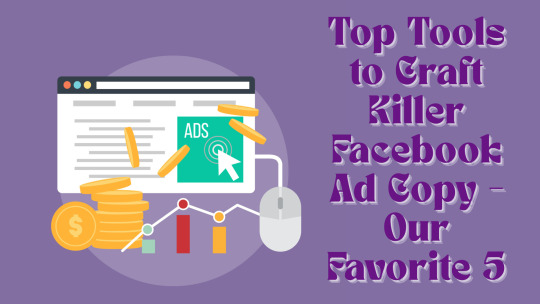
Creating compelling Facebook ad copy can be a daunting task, especially when you're trying to stand out in a crowded newsfeed. Whether you're promoting a product, a service, or trying to grow your brand, your message needs to be concise, persuasive, and aligned with your target audience's interests. That's where a Facebook ad copy generator becomes a game-changer. Below, we highlight five of our favorite tools that can help you craft high-converting Facebook ads quickly and efficiently. These tools save time and allow you to experiment with various ad styles and tones, ensuring your content resonates with your audience. Additionally, they help streamline your marketing process, enabling you to focus on other key aspects of your campaign.
1. AdsGPT
AdsGPT is an AI-powered Facebook ad copy generator that helps marketers, entrepreneurs, and agencies create optimized ad content in seconds. Designed specifically for Facebook ads, AdsGPT uses machine learning to generate copy tailored to your business goals and audience. Whether you need attention-grabbing headlines or persuasive calls-to-action, this tool adapts to your tone and style, helping you increase engagement and conversions. Its intuitive interface and customizable templates make it a favorite among digital marketers.
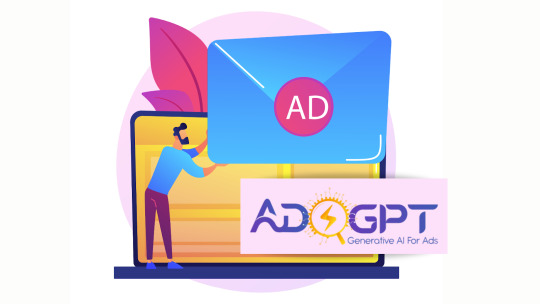
2. Copy.ai
Copy.ai is a versatile AI writing assistant that offers a dedicated Facebook ad copy generator among its many features. With just a few inputs about your product or service, Copy.ai can produce multiple ad copy variants in seconds. It's especially useful for brainstorming ad ideas and testing different messaging angles. From short punchy lines to longer value-driven descriptions, Copy.ai helps you maintain creativity while saving time.
3. Jasper (formerly Jarvis)
Jasper is a widely known AI writing platform that excels at generating high-quality marketing content, including Facebook ads. Using its "PAS" (Problem-Agitate-Solution) and "AIDA" (Attention-Interest-Desire-Action) frameworks, Jasper creates emotionally resonant and persuasive copy that aligns with sales psychology principles. Its Facebook ad copy generator can be fine-tuned with tone and style preferences, making it perfect for brands with a distinct voice.
4. Writesonic
Writesonic is another powerful AI content tool with a feature-rich Facebook ad copy generator. This ad creation platform allows users to generate tailored ad content for different campaign goals, whether it's traffic, conversions, or lead generation. Writesonic supports multiple languages and tones, making it ideal for global brands. Its dynamic interface and the ability to compare several copy versions at once make it an excellent choice for A/B testing
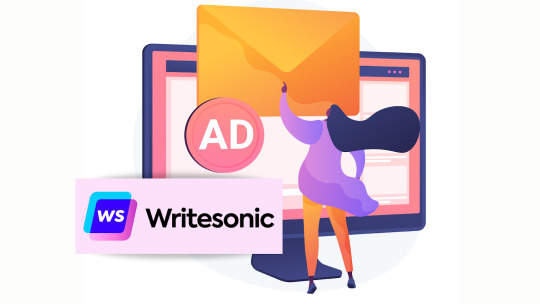
5. Anyword
Anyword leverages predictive analytics to help you create Facebook ads that convert. Its standout feature is performance prediction, where each generated copy variant is given a score based on its potential effectiveness. This data-driven approach allows marketers to select the most impactful message before launching a campaign. The Facebook ad copy generator in Anyword is designed to help you communicate value clearly and convincingly, improving your ROI with every ad.
Why Use a Facebook Ad Copy Generator?
Using a Facebook ad copy generator not only saves time but also enhances creativity and ensures consistency in your messaging. These tools often come equipped with best-practice templates, AI-driven insights, and optimization features that are difficult to replicate manually. Whether you're a solo entrepreneur or managing campaigns for multiple clients, having a reliable ad copy generator at your disposal can dramatically improve your productivity and results.
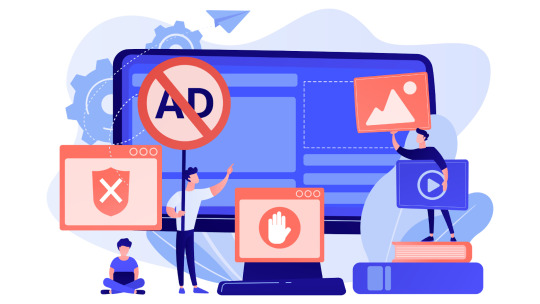
You can also watch: Meet AdsGPT’s Addie| Smarter Ad Copy Creation In Seconds
youtube
Final Thoughts
With Facebook ads becoming more competitive, having an edge in your ad copy is essential. Each of the tools mentioned above — AdsGpt, Copy.ai, Jasper, Writesonic, and Anyword — offers unique strengths tailored to different needs. Experiment with a few and see which one aligns best with your brand's voice and marketing goals. By incorporating a powerful Facebook ad copy generator into your toolkit, you'll be better equipped to capture attention, drive engagement, and ultimately, boost your bottom line.
2 notes
·
View notes
Text
Sustainability in the Food and Beverage Sector: A Business Take
Sustainability in the food and beverage industry goes beyond a trendy concept—it’s a necessity. It involves ensuring that production, transportation, and sales processes minimize environmental harm while maintaining long-term ecological balance. Businesses that adopt sustainable practices not only contribute to a healthier planet but also build resilience and gain consumer trust.
Read More: https://theenterpriseglobe.com/business/sustainability-in-the-food-and-beverage-sector-a-business-take/
Rethinking the Value Chain
The supply chain offers a significant opportunity to drive meaningful change. Many companies depend on large suppliers who may not prioritize sustainability. Instead, businesses should focus on sourcing from certified suppliers, reducing food miles, and supporting local farmers. Local sourcing not only reduces costs and fosters goodwill but also allows companies to offer fresher products to their customers.
Another crucial factor is logistics. Are we optimizing transportation? Are we investing in fuel-efficient or electric vehicles? Such questions can reshape operations, making supply chains smarter and more sustainable.
Reducing Food Waste
Food waste remains a massive challenge. The Food and Agriculture Organization (FAO) estimates that nearly one-third of global food production is wasted. Effective demand forecasting and inventory management can prevent overproduction and spoilage. AI-driven analytics can enhance demand prediction, reducing unnecessary waste.
Repurposing excess food is another viable solution. Donating surplus food to charities or converting waste into by-products can make a significant difference. Innovative approaches, such as using fruit peels for packaging materials, demonstrate how businesses can turn waste into valuable resources.
Towards Renewable Energy & Green Operations
A major yet often overlooked issue is the energy consumption of food and beverage companies. Transitioning to renewable energy sources like solar panels, wind turbines, and energy-efficient machinery can drastically cut reliance on fossil fuels. While initial investments may seem steep, the long-term cost savings and environmental benefits are undeniable.
Water conservation is equally important. Implementing water-efficient irrigation methods, recycling water in processing plants, and reducing wastage in production can help preserve this vital resource.
Eco-Friendly Packaging Solutions
The industry’s reliance on single-use plastics is a growing concern. Consumers are demanding more eco-friendly alternatives, pushing businesses to explore biodegradable and recyclable packaging. Edible packaging, made from natural materials, is an innovative solution that reduces waste while maintaining functionality.
However, switching materials isn’t enough. Educating consumers about proper disposal methods through clear labeling and awareness campaigns ensures that recyclable and compostable packaging serves its intended purpose.
Transparency & Authentic Communication
Transparency fosters trust. Consumers want to know where their food comes from and how it is produced. Companies that openly share their sustainability efforts—including sourcing, production methods, and targets��tend to attract loyal customers. Certifications such as Fair Trade, USDA Organic, or Rainforest Alliance add credibility.
However, businesses must avoid greenwashing. Authenticity is key—sharing both successes and challenges helps build genuine connections with consumers and stakeholders.
Collaboration for Greater Impact
Sustainability is not a solo effort. Collaboration between companies, industries, and even competitors can drive significant progress. Joint initiatives can tackle larger issues such as climate change and deforestation, creating shared standards that benefit the entire sector.
Educating Employees & Consumers
Sustainability starts from within. Educating employees on conservation practices—whether through energy-saving initiatives in offices or participating in community clean-ups—creates a culture of responsibility.
Consumers also play a crucial role. Awareness campaigns that promote sustainable consumption, such as reducing meat intake or choosing seasonal produce, can drive behavioral change, influencing demand and encouraging responsible choices.
Monitoring & Measuring Progress
Setting achievable sustainability goals and tracking progress is essential. Businesses that conduct regular sustainability audits can identify areas for improvement and adjust their strategies accordingly. Measuring impact ensures that sustainability efforts remain effective and aligned with broader environmental goals.
Final Thoughts
Sustainability in the food and beverage industry is no longer optional—it’s imperative. Every effort, from rethinking supply chains to educating stakeholders, contributes to a larger movement toward environmental responsibility. The journey may be challenging, but the rewards—both for businesses and the planet—are invaluable. By working together, companies and individuals can build a future where the food and beverage industry nourishes both people and the planet.Source: https://theenterpriseglobe.com/
#theenterpriseglobe#Sustainability#FoodIndustry#EcoFriendly#GreenBusiness#SustainableLiving#FMCG#FoodInnovation#ClimateAction#ZeroWaste
2 notes
·
View notes